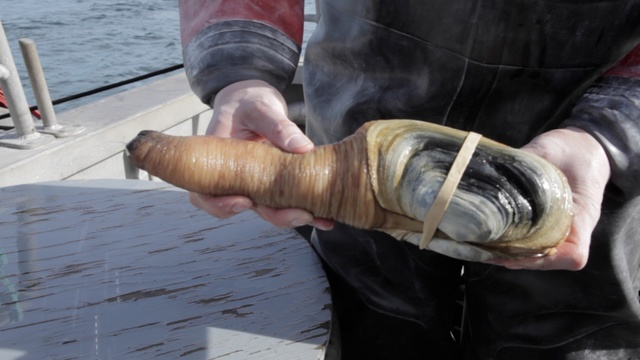Author: Kim Kalliber
NCAI Encouraged By DOI Opinion On Carcieri; Reaffirms Need For A Robust Fix That Ensures Tribal Equalit
Press Relase, The National Congress of American Indians
The Indian Reorganization Act was enacted in 1934 to restore Indian tribal governments and tribal lands after the failed federal policies of termination and assimilation. The Act ensured that the tribal way of life would continue and thrive. In its Carcieri decision, the Supreme Court determined that the Secretary of the Interior does not have authority to take land into trust for tribes that were not “under federal jurisdiction” prior to 1934. However, the Court did not define what it means for a tribe to have been “under federal jurisdiction” as of the enactment of the IRA.
According to the DOI opinion, M-37029, the term “under federal jurisdiction” is ambiguous and undefined, therefore the DOI has the authority to determine which tribes do and do not fall under the statute and will proceed to make decisions about trust agreements accordingly. In previous legal work, NCAI has taken the view that the Constitution devotes authority in Indian affairs to the federal government and that the only question is whether an Indian tribe exists, as in the Supreme Court’s decision in U.S. v. Sandoval in 1913.
Of the opinion, NCAI President Brian Cladoosby stated:
More importantly, the decision is a direct attack on tribal sovereignty. Indian trust land is the foundation of tribal economies and the only real federal protection of tribal authority from state and local governments.
NCAI is committed to the preservation of tribal sovereignty and ensuring a robust nation-to-nation between tribes and the federal government. We will continue to support and work with tribal leaders to advance these priorities.
Weigh in on Baker Lake sockeye fishery
By Wayne Kruse, The Herald
Never been interested in getting involved in the annual salmon season-setting process? Maybe you should rethink that position, and here’s a specific example of how public input can affect your fishing opportunity:
The preseason forecast for the uber-popular Baker Lake sockeye fishery is 35,380 fish, according to Washington Department of Fish and Wildlife biologist Brett Barkdull in La Conner. That’s not as good as the numbers for the initial fishery in 2012, when the run clocked in at about 48,000, but much better than last summer’s meager 18,000 fish.
So there should be plenty of sockeye for a pretty good season this year. But the guy in the back of the room raises his hand and asks, “Who gets to catch ’em?”
Will it be primarily the bank fisherman on the lower Skagit, plunking with Spin N Glo and shrimp? Or will it the boater on Baker Lake, with downriggers and trolling gear? Or should the catch be split between the two very distinct user groups? That’s the question you can help answer by being at the public meeting 6-9 p.m., March 22nd at WDFW’s Mill Creek office (16018 Mill Creek Boulevard, phone 425-775-1311).
“The public will decide,” Barkdull said. “It’s their fish, and we’re taking input right now.”
The recreational sockeye catch on the river during the 2012 season was 4,300 fish, despite terrible fishing conditions. “The river was high, cold, dirty and people were dodging trees,” Barkdull said. The catch in the lake that summer was 9,600 salmon.
The river opened June 16 and the lake on July 1 in 2012. There were not enough fish predicted last year for both a river and lake fishery, so the lake opened July 10. This year?
“Nothing’s set,” Barkdull said. “It’s a relatively new fishery, and the where and how are still shaking out.”
He said last year’s preseason discussions were influenced more heavily by a larger contingent of lake-oriented anglers. Many of the river fishermen, by contrast, were apparently afraid that if they once lost the river option, they would never get it back.
“That’s not true,” Barkdull said. “One of our management goals is to harvest more than the roughly 50 percent of hatchery sockeye caught in the first two seasons, and both a river and a lake fishery might be one way to do that.”
If a river opening becomes part of the sockeye scenario, it will not be at the mouth of the Baker River. Barkdull said that small area drew crowds and some confrontations in the past, so the fishery was moved downstream. The hot spots during the 2012 river fishery, Barkdull said, were Young’s Bar, just upriver from downtown Mount Vernon; the “soccer fields,” farther upriver; and at Gilligan Creek, above Sedro-Woolley.
Only about 6,000 sockeye were trucked last year from the power company fish trap to the lake, resulting in a slow — and short — season. If, say, 15,000 fish could be trapped and trucked this year, that would likely result in a very good fishery.
Derby
Next up in the Northwest salmon derby Series is the 8th running of the Everett Blackmouth Derby, March 22, marine areas 8-1, 8-2 and 9, offering a first place cash prize of $3,000. Tickets are limited to 100 boats, at $100 per boat (up to four anglers), and available at John’s Sporting Goods, Bayside Marine, Greg’s Custom Rods, Ted’s Sport Center, Ed’s Surplus, Three Rivers Marine, Performance Marine, and Harbor Marine.
For more information go to www.everettblackmouthderby.com.
Learn how
Tackle shop owner John Martinis and expert angler Mike Greenleaf will host an hour-long chinook fishing seminar at 7 p.m. March 19 at Bayside Marine, 1111 Craftsman Way, Everett. The free seminar will cover where to fish, rigging gear, rigging bait, selecting tackle and more. Martinis’ phone number is 425-259-3056; Bayside Marine’s number is 425-252-3088.
Local blackmouth
All Star Charters owner/skipper Gary Krein said the fairly good fishing for blackmouth on outer Possession Bar has held up well, but that near-flood-level rivers have pumped mud, logs and other debris into the area, making getting from Everett to the outer bar a risky endeavor.
“And we had to go at least halfway across the bar to find clean water early this week,” Krein said.
Columbia River
Still no springers showing in the popular fishing areas of the lower Columbia, according to Joe Hymer, state biologist in Vancouver.
“Despite sampling 100 boats and just over 100 bank fishermen, we checked one steelhead last week,” Hymer said on Monday. “In fact, we still haven’t sampled our first spring chinook of the season.”
Farther upriver, walleye fishermen were doing much better. State checks on The Dalles Pool last week showed 35 boat fishermen had kept 38 walleye and released 21 more. On the John Day Arm and vicinity, 39 fishermen kept 22 and released nine fish.
And above the Tri-Cities, the Ringold-area steelhead fishery has finally come on. State personnel last week checked 14 bank and 12 boat fishermen, with 18 hatchery steelhead. Anglers averaged between six and 16 hours per fish.
Smelt
Recreational smelt dipping in the Cowlitz on Saturday was excellent, state biologist Joe Hymer said. Most dippers were harvesting their 10-pound limit in only a few dips.
Smelt were reported as far upstream on the Cowlitz as Blue Creek, and also reported in the North Fork Lewis and as far up the mainstem Columbia as Vancouver.
No more recreational smelt fisheries were scheduled, as of early this week, Hymer said.
Record walleye
A record Washington State walleye was caught Feb. 28 on Lake Wallula (McNary Pool, Columbia River) by John Grubenhoff of Pasco. The fish weighed 20.32 pounds, was 35.5 inches long, and had a girth of 22.75 inches. Grubenhoff was trolling upstream along a current break in 22 feet of water, using a Rapala J-13, six feet behind a 2-ounce bottom walker.
The previous record walleye was also caught in February, 2007, in the same Columbia pool, by Mike Hepper of Richland, and weighed 19.3 pounds.
Wolves stable
The Washington Department of Fish and Wildlife released over the weekend its official annual count of gray wolves living in the state: 52 individuals; one more than found in the 2012 count, and the same number of breeding pairs as reported in 2012. Wolves in eastern Washington were federally delisted a few years ago, but they are still protected under state endangered species laws.
Free seminars
Cabela’s Tulalip store presents Spring Great Outdoor Days this weekend, March 15-16, offering free seminars, turkey calling contests, Dutch oven cooking, bow fishing and more.
Highlights include: Introduction to Reloading; Dutch Oven Meals; Turkey Calling Techniques and Fine Tuning Your Hunting Skills; Applying for Out of State Tags; and Spring Bear Hunting and Calling Tips & Tactics.
Lakota vow: ‘Dead or in prison before we allow the KXL pipeline’

By Camila Ibanez, March 13, 2014. Source: Waging Nonviolence
On February 27, Oglala Lakota and American Indian Movement activists joined in a four-directions walk to commemorate Liberation Day, an event to mark the 1890 massacre at Wounded Knee. As they do each year, four groups gather to the north, south, east and west and then walk eight miles until converging on top of Wounded Knee, where they honor the fallen warriors and the tribe’s rich history of resistance.
“It is an acknowledgement of the resiliency of who we are as a people,” explains Andrew Iron Shell, an organizer and activist of the Sicangu Lakota Nation. “It gives permission and courage for our up-and-coming generations to face the challenges of their time.”
The history of the occupation began with a massacre more than 100 years ago. On a cold day in December 1890, the United States army killed 300 Lakota men, women and children in a massive shoot out after a member of the First Nations refused to give up his arms. It marked the first bloodshed on Wounded Knee – although there had been many massacres of First Nations people by the colonialists before it. The event was also considered the end of the Indian Wars.
Eighty-three years later, on Feb. 27, 1973, about 200 Lakota members took siege of the town of Wounded Knee. Reclaiming a location that was written in the history books as a place of defeat, the Lakota stood their ground. They were there in protest of a failed attempt at impeaching the tribal president at the time, Richard Wilson, who was known to be corrupt and abusive. Initially a protest against the tribal government, the occupation took a turn when U.S. police forces arrived. The protestors switched the occupation’s focus to the United States’ frequent violation of treaties.
The armed warriors maintained control over the town for 71 days while the FBI encircled them. At the final standoff, two warriors were killed, about 12 people were wounded and over 400 were arrested. The Oglala were able to harness national attention through their occupation, using the spotlight to question the United States’ treatment of First Nations people.
As history passed, later generations rarely heard about the occupation of Wounded Knee — or about first nation people at all. This skewed national memory should be unsurprising: When you have a society and a nation built upon the subjugation of people of color, you can expect nothing more than the constant erasing of certain histories.
Ongoing genocide
I recently visited Prisoner of War Camp 344, also known as the Pine Ridge Indian Reservation. It wasn’t my first time in the sovereign Oglala Sioux Nation, but it was my first time joining in the ceremonies celebrating the 41st annual Liberation Day to remember the 1890 reoccupation of Wounded Knee.
The vibrant American Indian Movement flags waving in the harsh South Dakota winter wind reminded me of the old black and white photos I used to see in my history books. The Lakota would not disappear without a fight, regardless of what the United States’ intentions were. Children walked alongside elders who had taken part in the occupation, showing clearly the group’s intergenerational wisdom. These are children who are stripped of learning their people’s history in schools, but instead learn it through stories and dances. They are children who live in a sovereign nation that contains two of the poorest counties in the United States and who recognize the threats their families face every day.
One of these threats come from the so-called town of White Clay, Neb., where visitors can witness the way violence against the First Nations people has changed — but not disappeared — over the generations. Consisting of only 12 people and four liquor stores, White Clay was once part of a 50-square-mile buffer that prevented alcohol from entering the reservation. In 1904, President Roosevelt signed an executive order that removed 49 of those square miles. Since then, the town’s economy has been driven by the $4 million in alcohol sales to the people of the Pine Ridge Indian Reservation. There is no legal place to drink in or around White Clay: Alcohol containers can’t be opened on the property of the distributor, it’s prohibited to drink in the street, and the reservation is dry territory. Yet, somehow, the town of 12 people manages to keep four liquor stores open. Barely two miles from the reservation’s epicenter, and less than 200 feet from the dry reservation line, the town perpetrates a type of violence that is, on the reservation, known as liquid genocide.
The reason for this name becomes apparent when one examines the teenage suicide rate on the reservation, which is 150 percent higher than the U.S. national average for this age group. Many attribute this death rate to the sale of alcohol to minors, which White Clay store owners are known to do. The liquor stores also break the law by selling to intoxicated people, and by trading alcohol for pornography, sexual favors — including from minors — and welfare checks. The effects of free-flowing alcohol are devastating: On the reservation, 90 percent of all court cases are related to alcohol use.
Kate, a Tokala warrior, believes that alcoholism is part of a larger problem of the disappearance of indigenous culture. For her, the only way to live in the geographical region of Pine Ridge is the indigenous way. “We are the ones on the back roads, still chopping wood. We are living the way we used to live,” she said. “It’s not hardship; it’s the way it’s supposed to be.”
Kate and many others know that alcohol was introduced to her people as a means to steal from them. Living deeply connected to the history of their nation, they believe that if they shake free of the colonized mindset, alcohol wouldn’t even be an issue.
Threats to the land
In addition to trying to close down White Clay, the Oglala Lakota Nation is actively fighting the construction of the Keystone XL pipeline. This 1,700-mile pipeline, which would carry 830,000 barrels of crude oil each day from western Canada through South Dakota en route to Texas. At two points it would even intersect with a pipeline that serves as a main water source for the Sioux Nation, affecting all of the Pine Ridge reservation as well as the nearby Rosebud reservation.
Advocates for the pipeline argue the pipeline is the safest way to transport crude oil. TransCanada, the company in charge of the pipeline, predicted that the first Keystone pipeline, which runs from Alberta to Illinois, would spill once every seven years. During its first year in operation, it spilled 12 times. The Lakota, along with other First Nations, have vowed to use direct action to stop construction of the pipeline.
For a nation whose land and sovereignty has been threatened for hundreds of years by U.S. politics, the Keystone XL pipeline is part of a long history of threats to the Lakota Nation – and to the earth itself.
“They want to get rid of the Lakota, the protectors of the earth,” said Olowan Martinez, an organizer in the Lakota community. “But what they don’t know is when they get rid of the Lakota, the earth isn’t too far behind. Our people believe the Lakota is the earth.”
President Obama is scheduled to be make a final decision on the pipeline by the middle of 2014. While the Lakota are hoping he will not approve the project, they are also getting ready to stand up and fight. During the Liberation Day celebrations, the Lakota’s dances and stories relayed messages about sacred water and Mother Earth. The tribe has also united with other First Nations to organize a three-day direct action training called Moccasins on the Ground, which was designed to prepare people to act if the pipeline is approved.
“Dead or in prison before we allow the Keystone XL pipeline to pass,” the Lakota warriors, many mounted atop horses, repeated during the Liberation Day celebration. Their words carried the weight of 521 years, and counting, of lived resistance.
Food Handler’s Class, March 27
Food handlers class Thursday, March 27th at the Tulalip Administration Building. Anyone preparing or serving food on the reservation is required to have a current food worker card. Upon completion of the class and a passing test score, a food worker card will be issued which will be valid for three years from the test date. This card is valid for employment on the reservation only.
Washington Legislature Adjourns With No Action On Medical Marijuana, Gas Tax

The floor of the Washington Senate on the last night of the 60-day session
Credit Austin Jenkins / Northwest News Network
By Austin Jenkins, NW News Network
The Washington legislature adjourned its 60-day session just before midnight Thursday night.
In the final hours, lawmakers passed a bipartisan update to the state’s two-year budget. They also sent the governor a bill to give military veterans in-state tuition to attend college. And reauthorized a fee that pays for homeless housing.
But it’s what lawmakers did not do this legislative session that may stand out most for voters.
No gas tax increase
One major item lawmakers could not agree on — a gas tax increase to fund road projects and transit. It’s something Governor Jay Inslee has pushed for since taking office.
As the legislative session wound down, the blame game was just winding up.
“It’s obvious to me that over the last month the leadership in the House and the leadership in the Democratic side of the Senate were not interested in getting a revenue package out of the session,” said Republican Curtis King, co-chair of the Senate Transportation Committee.
Not so, responded Democrat Judy Clibborn, chairs of the House Transportation Committee. She blamed the Senate majority for not producing a gas tax package that could pass out of its own chamber.
“I am frustrated as anybody,” said Clibborn. “We worked very hard to get this done. It’s been a year-and-a-half to two years for me.”
A $40 million penalty?
Item number two on the did-not-pass list: a requirement that school districts use a federally-approved student test for any teacher evaluation. Why does this matter? U.S. Secretary of Education Arne Duncan has told Governor Inslee without this requirement Washington could lose its federal No Child Left Behind waiver. And with it control of $40 million in federal funds to help struggling students.
House Democratic Leader Pat Sullivan called the testing mandate flawed and said he’s prepared to pay the penalty.
“So be it,” he said. “If Arne Duncan wants to withhold 20 percent of funds from our poorest schools then I guess that’s his prerogative.”
Out in the Capitol Rotunda, State Schools Superintendent Randy Dorn was incensed at the bill’s demise.
“Adults not doing what’s right for kids,” he said.
Dorn blames the state’s teachers union for killing the bill.
Separate pot markets
Item number three on the did-not-pass list: a plan to roll Washington’s medical marijuana market into the state’s new, recreational pot marketplace. Republican State Senator Ann Rivers, one of the lead proponents of this merger, says Washington’s current unregulated medical marijuana industry is an invitation for federal intervention.
“We’re not showing a good faith effort to get it under control so the feds have nothing to judge us by.”
But Democrat Roger Goodman in the Washington House believes it was premature to change the medical marijuana system and it would have hurt patients. He wants to wait a year and isn’t worried about the feds sweeping in.
“They’re watching closely, we’re listening carefully,” says Goodman. “I think the chances of federal intervention are limited particularly as we show to them and continue to communicate with them that we’re working on it in advance of the next legislative session.”
So what else died in the Washington legislature this year? Dueling proposals on the minimum wage. A tax on e-cigarettes. And a ban on gay conversion therapy.
But the past 60-days in Olympia also featured some surprising bipartisan breakthroughs. A big one: undocumented students won access to state financial aid to attend college. But there’s no guarantee they’ll get that money because the program is already underfunded.
Much of this session was about the fall elections ahead. Control of the Washington Senate looks like it’s up for grabs for the first time in a decade.
Talks Set In Beijing On West Coast Shellfish Ban

Ashley Ahearn, KUOW
SEATTLE — There are signs of a thaw in the icy trade relations between the United States and China over a Chinese ban on imported shellfish from the West Coast of the U.S.
Chinese officials have agreed to meet next week with U.S. counterparts to discuss China’s import ban on shellfish harvested from Alaska, Washington, Oregon and part of California.
China banned shellfish imports from most of the West Coast in December over concerns about contamination. The move has cost the shellfish industry in Washington hundreds of thousands of dollars.
Representatives from the U.S. National Oceanic and Atmospheric Administration will be in Beijing March 21 to discuss China’s remaining concerns about shellfish imports. China instituted the ban when officials found high levels of arsenic and a naturally occurring biotoxin in two samples of geoduck.
The shellfish with high levels of biotoxin came from Ketchikan, Alaska.
The shellfish contaminated with arsenic were harvested near a site in Tacoma where a copper smelter operated along southern Puget Sound.
The smelter was in operation for 100 years and shellfish beds nearby were closed until 2007.
The state Department of Health did some follow-up testing on geoduck from the area and says the shellfish are safe to eat.
Ancient artifacts could be latest issue for Bertha

By Josh Kerns, MyNorthwest.com
Ancient artifacts could be in the path of new drilling to reach the broken Seattle tunnel machine known as “Bertha,” says an expert with the Washington Department of Transportation.
WSDOT announced Thursday the manufacturer of the drill, Japan’s Hitachi-Zosen, has come up with a tentative plan to dig a shaft to the machine stalled 120-feet below the surface to determine the cause of the problems that halted drilling in December.
Workers started boring a series of 4-inch wide probes Thursday to determine if archaeological work is needed.
It’s a part of the tunnel project’s environmental review process, and because of changes in WSDOT’s digging depths, they must complete additional cultural resources survey work.
“This work is being coordinated with the Washington State Department of Archaeology and Historic Preservation (DAHP) and tribal governments that are consulting on the project,” said WSDOT in a news release.
The shaft will be dug through an area filled in years ago along the Seattle waterfront that predates settlement of the city and could contain historical artifacts, says WSDOT cultural resources manager Steve Archer.
The drilling is expected to take about a week and shouldn’t delay the project even if artifacts of cultural significance are discovered, Publicola reports.
WSDOT Deputy Administrator Matt Preedy says contractors hope to announce a plan next week for the 120-foot shaft. The big question is whether crews will be able to simply replace damaged seals that protect the massive bearing that helps turn the machine’s cutter head or whether it will require workers to pull the cutter head itself out to the surface from its current location.
While Hitachi has been considering three different sized shafts, Preedy says the company is favoring the smaller of the three options, which would be faster and less expensive than the other options.
Correction: An earlier version of this story said ‘Indian artifacts’. WSDOT says the purpose of the soil testing is to look for anything of archaeological significance, which includes several possibilities, native artifacts among them.
The Associated Press contributed to this report
Clarks Creek may provide clues to Puget Sound restoration
Source: Northwest Indian Fisheries
PUYALLUP – The Puyallup Tribe of Indians working to decrease sediment in Clarks Creek, an important salmon tributary to the Puyallup River.
“Clarks Creek is important because it supports several different species of salmon, some listed under the federal Endangered Species Act,” said Char Naylor, water quality program manager for the tribe. Clarks Creek also supports the highest salmon spawning densities in the Puyallup watershed as well as the most significant number and variety of spawning salmon within a city limits in the watershed.
“Its also important because it can be an example of how we can restore hundreds of small urban streams in Puget Sound,” Naylor said. The problems facing the Clarks Creek watershed are endemic to most Puget Sound lowland streams. The principal non-point pollutants causing degradation are excessive sediment, nuisance weed growth, nutrient enrichment and excessive bacteria loading.
“If we can tackle these issues in Clarks Creek, we can show other Puget Sound communities how to heal their streams,” Naylor said.
The tribe is leading a regional effort to clean up the creek by reducing the amount of sediment flowing into it. Too much sediment in a stream drives down salmon productivity because it impacts the fish’s ability to find clean spawning gravel in which to spawn or rear. The goal of the project is to reduce sediment loads by half and nutrient and bacteria by a third by lowering flows and stabilizing banks to reducing channel erosion.
The tribe recently finished a two-year study of sediment sources throughout Clarks Creek. The study found that if 23 major sources of sediment were repaired, over 50 percent of the creek’s sediment problem would go away. Yet by doing just the top eight bank stabilization projects, a huge amount of sediment can be removed from the stream very cost-effectively.
The tribe is putting together plans to restore two those major sources of sediment in the creek. The tribal projects would stabilize the banks of two Clarks Creek tributaries. “We would literally be changing the shapes of their banks and channels, adding gravel and planting vegetation along their banks,” Naylor said.
Other sorts of projects suggested by the study include stormwater retrofits, low impact development, and stormwater detention ponds.
Most of the creek’s sediment actually start with the river it flows into. “The Puyallup River is diked through most of its lower reach,” Naylor said. “This caused the river bed itself to drop, which means the creeks flowing into it also drop.” This down-cutting action puts more sediment into the creek than would be there otherwise.
Clarks Creek is just 4 miles long and flows through suburban neighborhoods of the city of Puyallup before joining the Puyallup River. Because it is largely spring-fed, the creek has a consistent level of water throughout the year, making it great rearing habitat for juvenile salmon. The Puyallup Tribe also operates a chinook hatchery on the creek.
“We have already begun working on implementing several of the identified sediment projects to restore the watershed almost before the ink was dry on the report,,” Naylor said. “It is satisfying to have changed the status quo, the way things have been done in this watershed over the last several decades.”









